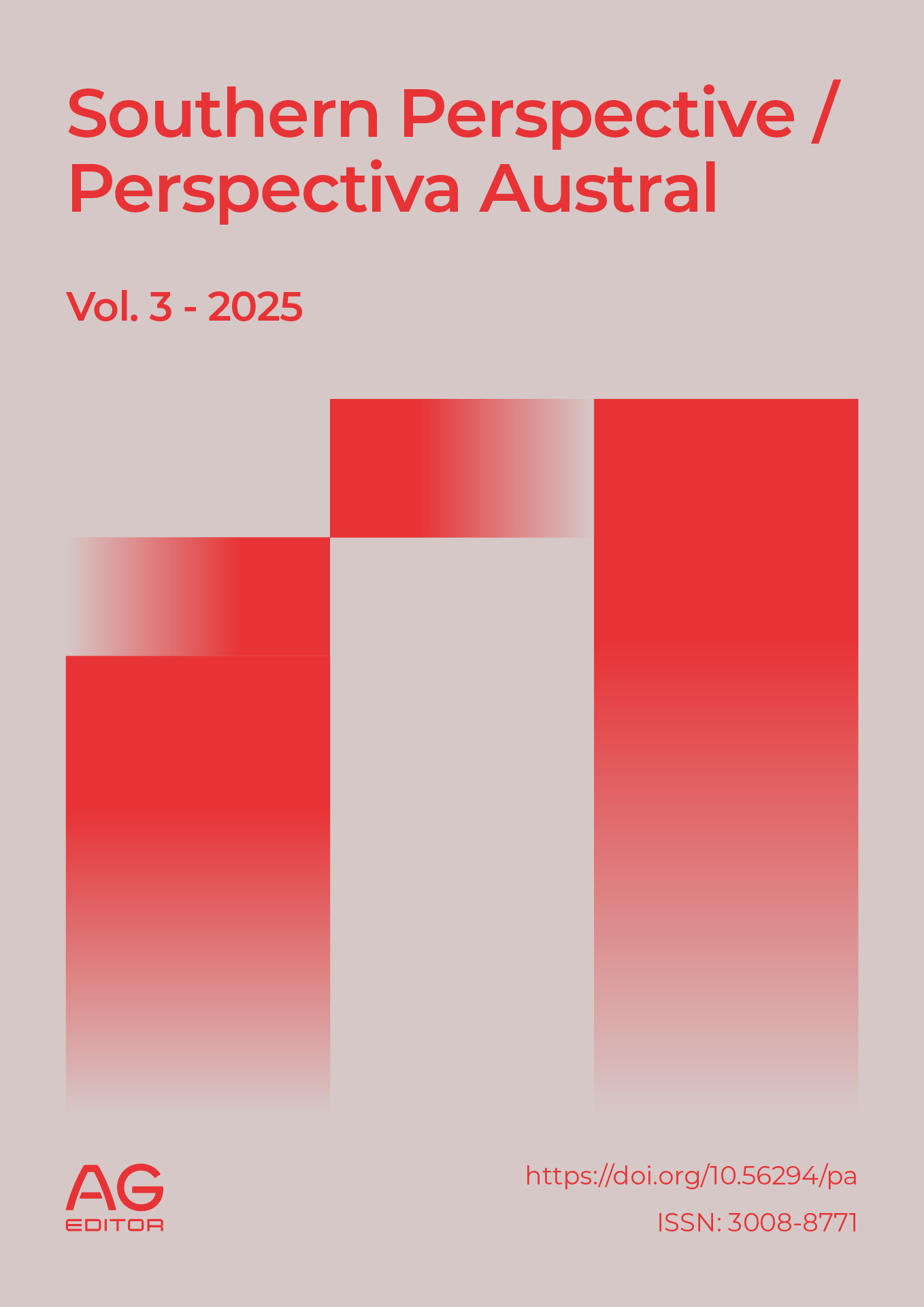Responsible consumption and production in textile industry: a critical analysis
DOI:
https://doi.org/10.56294/pa202598Keywords:
Sustainability, Textile industry, Production, Environmental impactAbstract
Throughout this article, the Sustainable Development Goal twelve: Responsible Consumption And Production is related to the textile sector. A critical analysis is made of this correlation, using qualitative analysis techniques to identify and select relevant studies, research, and sources from various academic databases, government entities, and international organizations. The context is established by giving a description of this sustainable development goal, the textile sector is discussed where the countries that produce and export the most products from the textile industry are mentioned. The analysis of the relationship between these two, mainly focused on environmental impact. It is concluded that the sector in question has a fairly significant negative environmental impact, and that it is important to confront these negative impacts by implementing the Sustainable Development Goals (SDGs). It is crucial to take immediate measures to counteract this situation, as it affects the world in general.
References
Sentená Montero, M. A. (2018). Huella Ecológica del sector Textil-Confección en Colombia para el año 2018. Repositorio Institucional Javeriano. https://repository.javeriana.edu.co/bitstream/handle/10554/52684/SENTENAM-TESIS.pdf?sequence=2&isAllowed=y
Naciones Unidas (2015). La Asamblea General adopta la Agenda 2030 para el Desarrollo Sostenible https://www.un.org/sustainabledevelopment/es/2015/09/la-asamblea-general-adopta-la-agenda-2030-para-el-desarrollo-sostenible/
Cepal. (2019). ODS 12: Garantizar modalidades de consumo y producción sostenibles en América Latina y el Caribe https://www.cepal.org/sites/default/files/static/files/ods12_c1900731_press.pdf
Fashion Revolution. (2020). El reto que enfrenta la industria colombiana de confecciones y afines ante el Covid-19 - Fashion Revolution : Fashion Revolution. Fashion Revolution Colombia. https://www.fashionrevolution.org/-blog/el-reto-que-enfrenta-la-industria-colombiana-de-confecciones-y-afines-ante-el-covid-19/
Deutsche Welle. (2020). La ropa que llevamos | DW Documental - YouTube. https://www.youtube.com/watch?v=j2S5EBGJqMo
Naciones Unidas. (2019). El costo de estar a la moda. Noticias ONU https://news.un.org/es/story/2019/04/1454161
Pastran, A. L. (2021). Acción por el Clima: Emprendedores Sostenibles (ODS 12 Producción y Consumo Responsable). Cuadernos Del Centro De Estudios De Diseño Y Comunicación, (128). https://doi.org/10.18682/cdc.vi128.4867
Melo, M. J. (2023) El impacto ambiental de la producción textil. Statista. https://es.statista.com/grafico/30682/impacto-medioambiental-de-la-produccion-de-fibras-textiles/
Domínguez Brito, F. (2023). Ganancias sostenibles: El nuevo modelo de desarrollo Visión del Estado sobre el ODS 12: Consumo y producción sostenibles. AULA Revista De Humanidades Y Ciencias Sociales, 62 (2). https://doi.org/10.33413/aulahcs.2018.62i2.82
Islam, M. T., Jahan, R., Jahan, M., Howlader, M. S., Islam, R., Islam, M. M., Hossen, M. S., Kumar, A., & Robin, A. H. (2022). Sustainable Textile Industry: An Overview. https://doi.org/10.30564/nmms.v4i2.4707
Grupo ESGinnova. (2018). ¿Qué es y para qué sirve la norma ISO 14001?. BLOG ESPECIALIZADO EN GESTIÓN MEDIOAMBIENTAL. https://www.nueva-iso-14001.com/2018/04/norma-iso-14001-que-es/
Gallino Yanzi, M. V., & De Bianchetti, A. E. (2019). La producción y consumo responsables como objetivos del desarrollo sustentable. Repositorio Universidad Nacional del Nordeste. https://repositorio.unne.edu.ar/bitstream/handle/123456789/30119/RIUNNE_FDCSP_AC_Gallino_Yanzi-De_Bianchetti.pdf?sequence=1&isAllowed=y
Observatorio de Complejidad Económica (OEC). (s.f). Textiles: los principales exportadores de Textiles. https://oec.world/es/profile/hs/textiles
Fernández Morilla, Mónica; Fernández-Ramos, Mª Yolanda; Vidal Raméntol, Salvador [et al.]. Objetivo de desarrollo sostenible nº 12: consumo y producción sostenible. Estudio sobre hábitos de consumo de los estudiantes. Revista de Educación Ambiental y Sostenibilidad, 2019, 1(1), 1201. https://revistas.uca.es/index.php/REAyS/article/view/4760.
Naciones Unidas. (s.f.). Camino hacia el consumo sostenible https://www.un.org/es/desa/sustainable-consumption
Elías Zambrano, R., Jiménez-Marín, G., & Galiano Coronil, A. (2023). Estrategias de marketing social y comunicación de la slow fashion como herramienta de happiness management. Anduli: revista andaluza de ciencias sociales, 23, 99-116. https://revistascientificas.us.es/index.php/anduli/article/view/20430/20334
United nations. (2020) RESPONSIBLE CONSUMPTION & PRODUCTION: WHY IT MATTERS https://www.un.org/sustainabledevelopment/wp-content/uploads/2019/07/12_Why-It-Matters-2020.pdf
Hernández Ayllón, J. (2021). La moda sostenible como alternativa frente al consumo masivo: análisis de la comunicación de marcas slow fashion. https://uvadoc.uva.es/handle/10324/48108
Mejia-Giraldo, J. F., & Arango-Román, A. (2023). El consumo responsable como un desafío social. Sociedad y Economía.
https://sociedadyeconomia.univalle.edu.co/index.php/sociedad_y_economia/article/view/11954/15796
GLOBAL ORGANIC TEXTILE STANDARD. (s.f.). THE STANDARD https://global-standard.org/the-standard
Mostrar panel latera
Saavedra Once, M. G. (2022). Programa educacional dirigido a jóvenes sobre concienciación de la problemática de la industria textil. Repositorio Universidad Pontificia de Cartagena. https://repositorio.upct.es/bitstream/handle/10317/11564/tfg-saa-pro.pdf?sequence=1&isAllowed=y
Larios Francia, R. P. (2019). El reto de la sostenibilidad en la industria textil y de la moda. Repositorio Universidad de Lima https://repositorio.ulima.edu.pe/bitstream/handle/20.500.12724/10185/Larios_el_reto_de_la_sostenibilidad.pdf?sequence=1&isAllowed=y
Textile industry and environment, s. f., Capítulo 1. Google Books. https://books.google.es/books?hl=es&lr=&id=QhT8DwAAQBAJ&oi=fnd&pg=PA1&dq=sustainable+production+in+textile+industry&ots=WKuE77Vje7&sig=tLOPlM1rBvDSWvCFgmz8-vdyh2s#v=onepage&q&f=false
Parlamento Europeo (2020) El impacto de la producción textil y de los residuos en el medio ambiente https://www.europarl.europa.eu/news/es/headlines/society/20201208STO93327/el-impacto-de-la-produccion-textil-y-de-los-residuos-en-el-medio-ambiente
Textile Exchange. (2020). Organic Content Standard (OCS) https://textileexchange.org/app/uploads/2021/02/OCS-101-V3.0-Organic-Content-Standard.pdf
Valenga, A. C. V., Stéfani, S. R., Carvalho, L. C., & Chiusoli, C. L. (2023). The influence of green fashion products on the achievement of the 12 sustainable development goals for masters and doctoral students. Revista de Administração da UFSM, 16(1), e8. https://doi.org/10.5902/1983465971311
Fairtrade International. (s.f). how fairtrade works https://info.fairtrade.net/es/what/how-fairtrade-works
Folgueira Suárez, T. (2018). El reto de la sostenibilidad en el sector textil-moda. Universidad de Coruña https://ruc.udc.es/dspace/bitstream/handle/2183/21057/FolgueiraSu%c3%a1rez_Tamara_TFG_2018.pdf?sequence=2&isAllowed=y
Valencia Jordán, C. A. (2019). Consumo sostenible, una comparativa entre Colombia y España en el sector textil. https://red.uao.edu.co/bitstream/handle/10614/11677/T08822.pdf;sequence=5
Textile Exchange. (2020). Quick Guide to the Recycled Content Standard (RCS) + Global Recycled Standard (GRS) https://textileexchange.org/app/uploads/2021/02/GRS-403-V4.0-Quick-Guide-to-the-RCS-and-GRS.pdf
Sánchez, C. M. (2018) La industria textil, la segunda más contaminante del planeta. Revista XLSemanal https://www.xlsemanal.com/actualidad/20160913/cataclismo-la-fast-fashion.html
Published
Issue
Section
License
Copyright (c) 2025 Oscar Arnulfo Mera Ramírez, Diana Valentina Torres Vivas, Guilmer Leandro Duran Páez (Author)

This work is licensed under a Creative Commons Attribution 4.0 International License.
The article is distributed under the Creative Commons Attribution 4.0 License. Unless otherwise stated, associated published material is distributed under the same licence.






